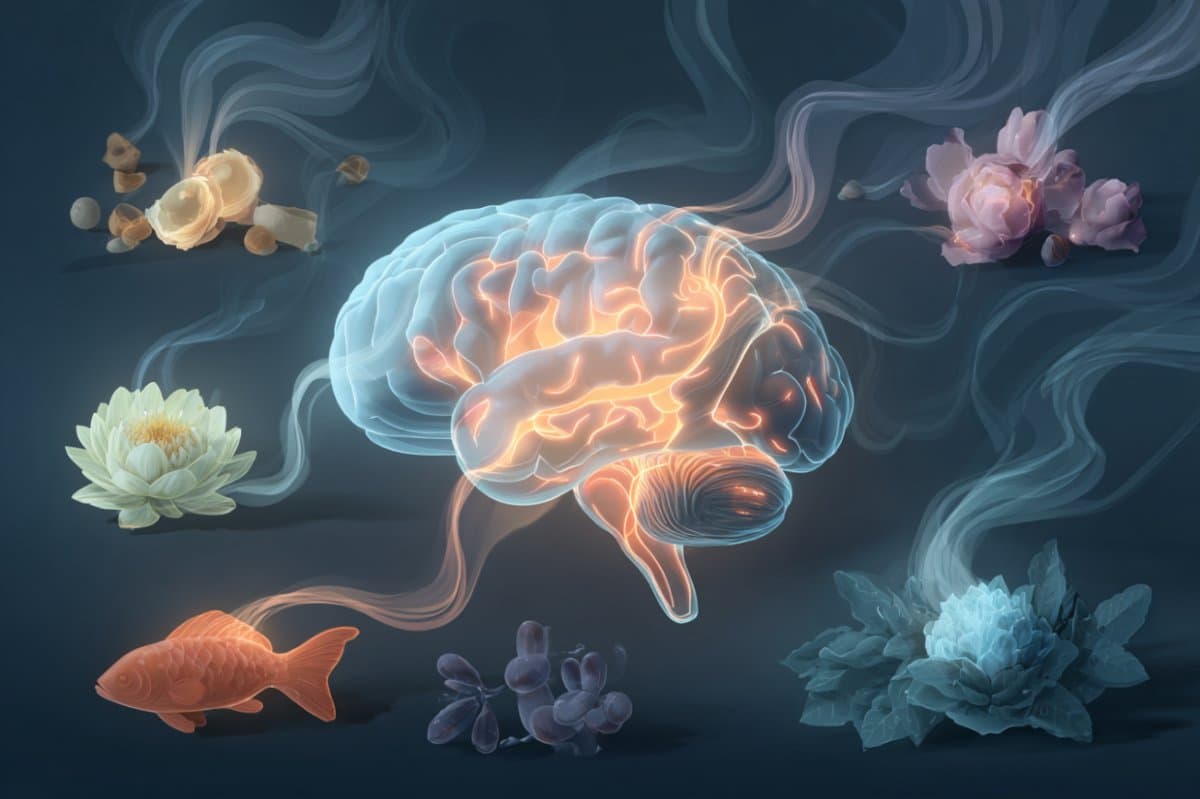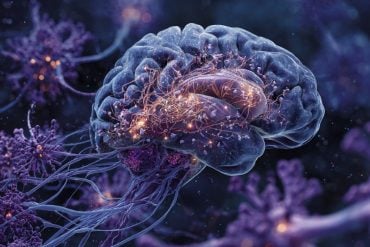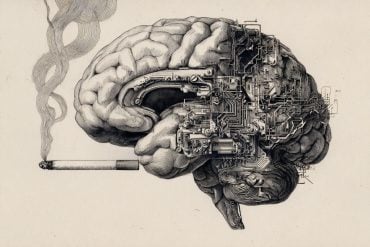Summary: A new study reveals how the brain determines whether a smell is pleasant or revolting, highlighting why scent evokes such strong emotional responses. Researchers focused on the amygdala, the brain’s emotional hub, and found two genetically distinct cell types that can make any odor feel good or bad, depending on where they project in the brain.
Contrary to expectations, these cells aren’t hardwired to one emotion—they’re flexible, able to assign either positive or negative value. This discovery could lead to treatments that help people with anxiety, PTSD, or sensory disorders reframe distressing smell-related experiences.
Key Facts:
- Emotional Wiring: The olfactory system connects directly to the amygdala, amplifying emotional responses to smell.
- Flexible Coding: Specialized brain cells can assign either positive or negative emotions to smells, depending on brain circuitry.
- Clinical Potential: Findings could inform therapies for conditions like PTSD, where smell triggers harmful emotional memories.
Source: University of Florida
You wouldn’t microwave fish around your worst enemy — the smell lingers both in kitchen and memory. It is one few of us like, let alone have positive associations with.
But what makes our brains decide a smell is stinky?
A new study from UF Health researchers reveals the mechanisms behind how your brain decides you dislike — even loathe — a smell.

Or as first author and graduate research fellow Sarah Sniffen puts it: How do odors come to acquire some sort of emotional charge?
In many ways, our world capitalizes upon the importance of smells to influence emotions, running the gamut from perfumes to cooking and even grocery store design.
“Odors are powerful at driving emotions, and it’s long been thought that the sense of smell is just as powerful, if not more powerful, at driving an emotional response as a picture, a song or any other sensory stimulus,” said senior author Dan Wesson, Ph.D., a professor of pharmacology and therapeutics in the UF College of Medicine and interim director of the Florida Chemical Senses Institute.
But until now, researchers have puzzled over what circuitry connects the parts of the brain vital to generating an emotional response with those responsible for smell perception.
The team started off with the amygdala, a brain region that curates your emotional responses to sensory stimuli. Although all our senses (sound, sight, taste, touch and smell) interact with this small part of your brain, the olfactory system takes a more direct route to it.
“This is, in part, what we mean when we say your sense of smell is your most emotional sense,” Sniffen said. “Yes, smells evoke strong, emotional memories, but the brain’s smell centers are more closely connected with emotional centers like the amygdala.”
In the study, researchers looked at mice, who share neurochemical similarities with people. They can learn about odors and categorize them as good or bad.
After observing their behavior and analyzing brain activity, the team found two genetically unique brain cell types that allow odors to be assigned into a bucket of good feelings or bad feelings.
Initially, the team expected that one cell type would generate a positive emotion to an odor, and another would generate a negative emotion. Instead, the brain’s cellular organization gives the cells the capability of doing either.
“It can make an odor positive or negative to you,” Wesson said. “And it all depends upon where that cell type projects in your brain and how it engages with structures in your brain.”
But why is knowing more about how we categorize smells important? Well, for starters, smells — and our reactions to them — are a part of life. Sometimes, however, our reactions to them can be outsized, or take on a negative association so strong it disrupts how we live.
“We’re constantly breathing in and out and that means that we’re constantly receiving olfactory input,” Sniffen said.
“For some people that’s fine, and it doesn’t impact their day-to-day life. They might even think, ‘Oh, odors don’t matter that much.’ But for people who have a heightened response to sensory stimuli, like those with PTSD or anxiety or autism, it’s a really important factor for their day-to-day life.”
In the future, the research could help clinicians adjust for heightened sensory response that some people struggle with in their everyday lives, Wesson added. One example? A patient associating a clinic’s smell with transfusions that made them queasy.
Based upon the receptor systems in these specific brain pathways, the team members believe they might be able to change those associations.
Potentially, medications could suppress some of these pathways’ activity to allow you to overcome stressful and aversive emotional responses.
Conversely, these pathways could be activated to restore enjoyment to things that people might have grown indifferent to — like those who lose their appetite from illness.
“Emotions in part dictate our quality of life, and we’re learning more about how they arise in our brain,” Wesson said. “Understanding more about how our surroundings can impact our feelings can help us become happier, healthier humans.”
About this olfaction research news
Author: Eric Hamilton
Source: University of Florida
Contact: Eric Hamilton – University of Florida
Image: The image is credited to Neuroscience News
Original Research: Open access.
“Directing negative emotional states through parallel genetically-distinct basolateral amygdala pathways to ventral striatum subregions” by Sarah Sniffen et al. Molecular Psychiatry
Abstract
Directing negative emotional states through parallel genetically-distinct basolateral amygdala pathways to ventral striatum subregions
Distinct basolateral amygdala (BLA) cell populations influence emotions in manners thought important for anxiety and anxiety disorders.
The BLA contains numerous cell types which can broadcast information into structures that may elicit changes in emotional states and behaviors.
BLA excitatory neurons can be divided into two main classes, one of which expresses Ppp1r1b (encoding protein phosphatase 1 regulatory inhibitor subunit 1B) which is downstream of the genes encoding the D1 and D2 dopamine receptors (Drd1 and Drd2 respectively).
The role of Drd1+ or Drd2+ BLA neurons in learned and unlearned emotional responses is unknown.
Here, we identified that the Drd1+ and Drd2+ BLA neuron populations form two parallel pathways for communication with the ventral striatum.
These neurons arise from the basal nucleus of the BLA, innervate the entire space of the ventral striatum, and are capable of exciting ventral striatum neurons.
Further, through two separate behavioral assays, we found that the Drd1+ and Drd2+ parallel pathways distinctly influence both learned and unlearned emotional states when they are activated or suppressed and do so depending upon where they synapse in the ventral striatum – with unique contributions of Drd1+ and Drd2+ circuitry on negative emotional states.
Overall, these results contribute to a model whereby parallel, genetically-distinct BLA to ventral striatum circuits inform emotional states in a projection-specific manner.






